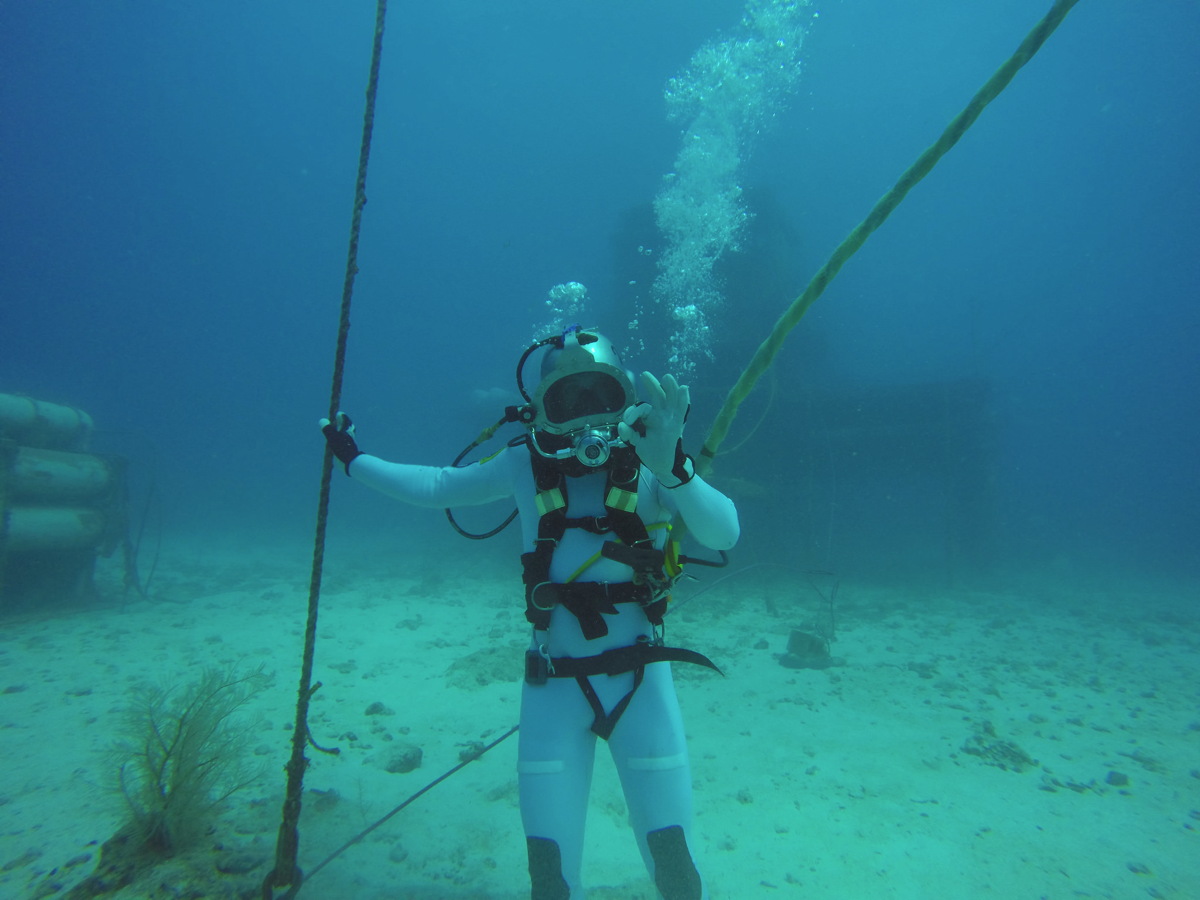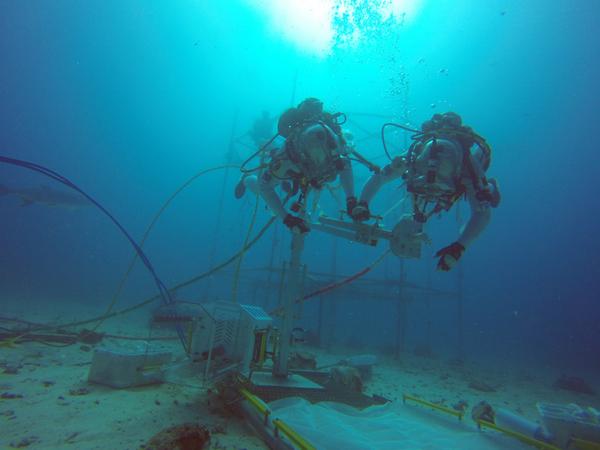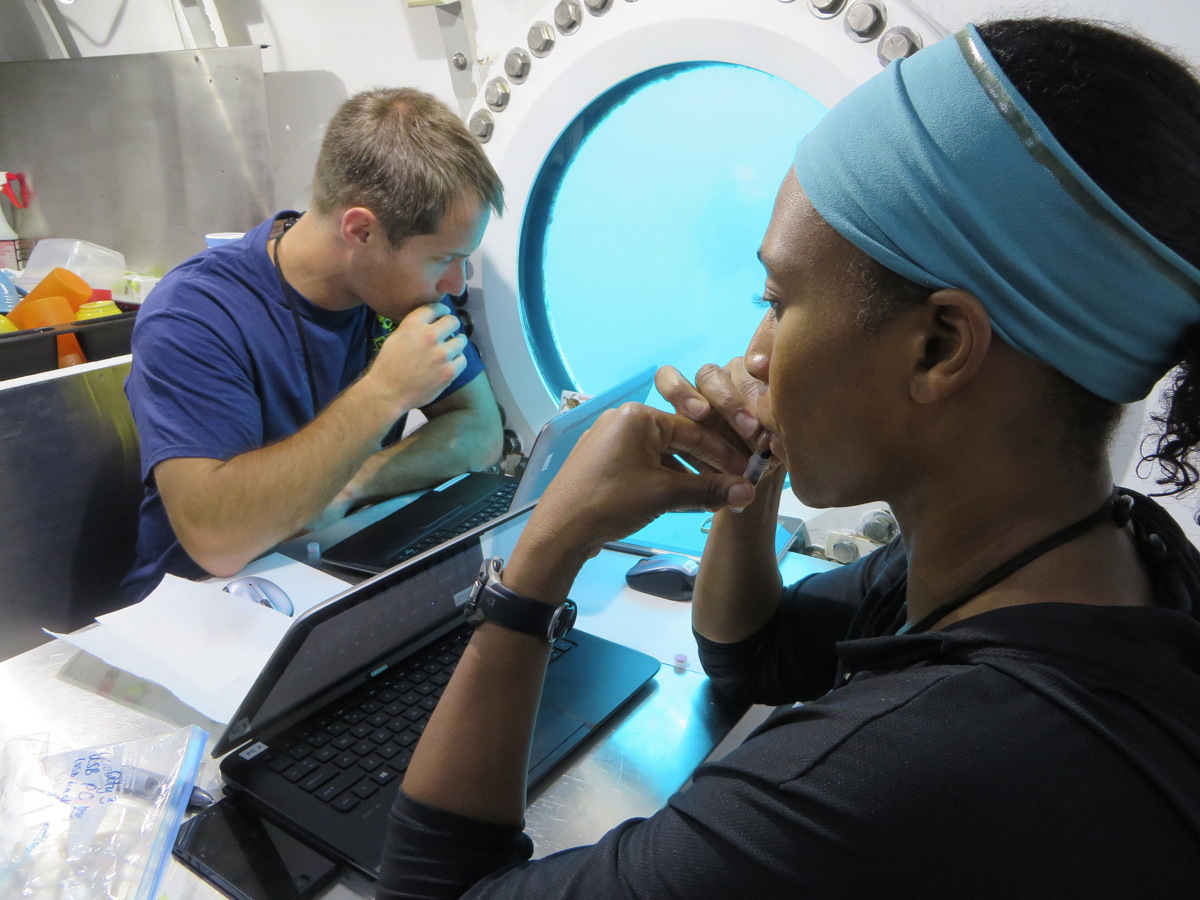Astronauts Test Google Glass, Heart Monitor in Undersea Base
A team of undersea astronauts took to the ocean floor last week to test out innovative new technologies that may one day make life in space easier.
The space tech sea trials came amid spectacular simulated underwater "spacewalks" during the NASA Extreme Environment Mission Operations mission (NEEMO), in which the underwater astronauts tested out a drill for a potential asteroid mission. The tests included using Google Glass to help astronauts keep track of what procedures to do next in space, and a Bluetooth heart rate monitor that would improve upon what the International Space Station uses right now.
"There's a lot of equipment on board the station that can cause interference with other devices," NASA astronaut Jeanette Epps told Space.com on July 28 from the Aquarius lab, 62 feet (19 meters) under water off the coast of Key Largo, Florida. [Gallery: Astronauts Explore Undersea 'Asteroid']
The astronauts tried out the heart rate monitor while using a hair dryer to see if that would produce interference, and early indications show that the monitor still works well, she added.

10-minute delay
The NEEMO mission, NASA's 18th, aims to test out technologies and procedures that would be useful for future space missions. Those included a drill astronauts manipulated during excursions in wetsuits and helmets, checking if it was possible to use the tool in a neutrally buoyant environment without unduly stressing either the drill or the astronaut.
The astronauts also ran procedures that could work with a five- or 10-minute delay in communications. In these tests, astronauts had four different places that they visited in a sort of circle. They would sequentially explain what they saw in each location, move on to the next, and aim to return to the first spot around the same time ground control received the information from the first spot and was able to respond. The astronauts would try to accomplish the same thing for the other three spots.
Get the Space.com Newsletter
Breaking space news, the latest updates on rocket launches, skywatching events and more!
"With a 10-minute delay in each direction, like we experienced today, you can't hold a rock up to a camera and say this is what you what you want," said NASA astronaut Mark Vande Hei. "So what we did is we had a circuit of four different places. We went to the first place, we showed a variety of things, and a survey of the general area."

Tight timeline

With nine days to accomplish their tasks, the four astronauts found the days packed to the minute. Even during the "pre-sleep" period, Vande Hei said, the astronauts would spend time reviewing pictures and getting ready for the next day.
"I haven't been in space, but my understanding — I've worked in the Mission Control team and watched the crew members in space try to keep up with the timelines there — and I always wondered what it would be like being on the other side," he said.
Three of the underwater astronauts have yet to fly to space.
"This definitely gave me a good sense of it," Vande Hei added. "The good days are when you're always keeping just a little ahead of the timeline, and the bad days are the ones where you can't find what you need, and something causes you to have to abort a task or have it postponed, or maybe the ground control team has to schedule for a different day."
The school-bus-sized habitat hosted six people (including two support personnel), giving some crewmembers their first experience in crowded environments. Epps, however, said that simply bonded the crew.
"It's just normal uncertainty, but it has turned out to be a lot of fun," she said.
Follow Elizabeth Howell @howellspace, or Space.com @Spacedotcom. We're also on Facebook and Google+. Original article on Space.com.
Join our Space Forums to keep talking space on the latest missions, night sky and more! And if you have a news tip, correction or comment, let us know at: community@space.com.

Elizabeth Howell (she/her), Ph.D., was a staff writer in the spaceflight channel between 2022 and 2024 specializing in Canadian space news. She was contributing writer for Space.com for 10 years from 2012 to 2024. Elizabeth's reporting includes multiple exclusives with the White House, leading world coverage about a lost-and-found space tomato on the International Space Station, witnessing five human spaceflight launches on two continents, flying parabolic, working inside a spacesuit, and participating in a simulated Mars mission. Her latest book, "Why Am I Taller?" (ECW Press, 2022) is co-written with astronaut Dave Williams.









